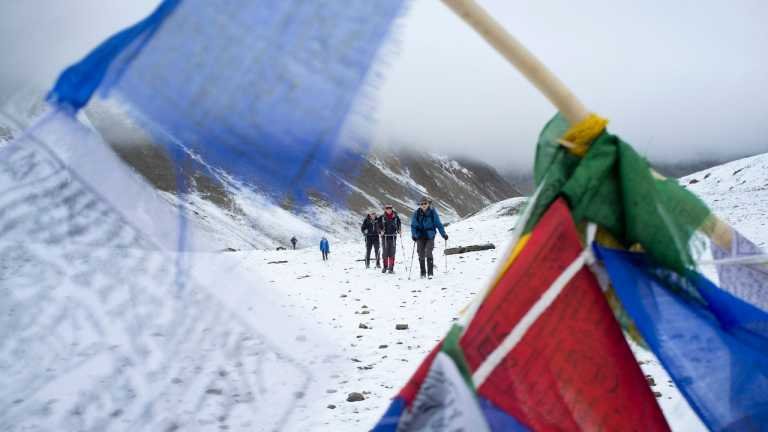
In 2022, in keeping with the Indian Mountaineering Federation, 33 international and 104 Indian expedition permits have been issued. About 50 to 60 % of vacationers apply for permits which price foreigners $100-$200 and Indians Rs1,200-Rs1,600. But, not many companies are supplied for the charge and there are a number of restrictions. As an example, satellite tv for pc telephones are banned, or, in particular instances, require permission. This whereas the Worldwide Climbing and Mountaineering Federation mandates the necessity and use of satellite tv for pc telephones.
Additionally, lengthy processes to acquire permits usually result in unlawful trekking and lots of trekkers go unaccounted for as they set off on their very own with out permits, backpack in tow.
“India presently has no info on who has entered its pure heritage. Registration of journey corporations and a mannequin regulation (in progress) will guarantee a safer atmosphere,” says Kala.
A single-window entry will vastly assist the trade, says Praveen Sood, common secretary, ATOA-M, which has carried out 65 rescues in its lifetime. “Within the West, one pays a membership per peak. Below its ambit, rescue and insurance coverage is roofed and obligatory. That might be a easy resolution,” Sood provides.
Undertake world security requirements
Sood appears at India’s neighbour for inspiration. “Nepal began Trekkers’ Data Administration Programs (TIMS) 10 years in the past with internationally licensed guides and pilots, skilled specialists, and rescue stations. India wants this,” he says.
The TIMS that Sood mentions was deployed by the Nepal Tourism Board and the Trekking Businesses’ Affiliation of Nepal to assist the safety of trekkers and curb unlawful trekking. Below this, trekking corporations are requested to furnish private info of trekkers who apply for TIMS playing cards. This info is then uploaded on the guests’ database and may be accessed in case of accidents and/or pure calamities.
“Ideally, we have to work on voluntary and paid search-and-rescue,” says Mandip Singh Soin, a famend mountaineer, explorer, and founding father of Ibex Expeditions. “We are able to comply with Europe the place expeditions are lined by insurance coverage or adapt a UK mannequin—a mix of insurance coverage and voluntary rescues, although in India that tradition is nascent. One of many errors states made was rising native operators not accepted by the Centre to ease permits. This misguided outlook was to present jobs to tourism. The dearth of kit checks, security protocol, is a recipe for catastrophe.”
He provides that India is dropping an unlimited market share internationally as insurance coverage usually doesn’t cowl expeditions if satellite tv for pc telephones, and different gadgets will not be permitted. He recollects the 2010 Ladakh floods, the place mobile messages guided folks to security. “If mobiles may be so useful, think about what satellite tv for pc telephones can do?” Soin, who can also be a Fellow of the Royal Geographical Society, provides: “[The phones] might be given to distant villages to assist swift rescue. On nationwide safety considerations–nicely, it’s straightforward to trace the person who you’re giving a satellite tv for pc telephone to. Immediately, with the shortage of reliable search-and-rescue, I do know many climbers who, even throughout Covid 19, would relatively go to the Alps. It is a purple flag for the Indian tourism trade.”
Until these methods fall into place, what can mountaineers do at a private stage? “Be preemptive and self-regulate,” says Sharma. “The folks we now have been capable of finding are aware about having a back-up plan. Within the glider’s case, his GPS gadget saved him as he pressed the emergency set off and buddies contacted us at 3:30pm. We had been in a position to dispatch a group by 3:50pm. If it was later, we’d have had a troublesome time finding him,” says Sharma.
Dr Sonali Sharma, a physician on the ABVIMAS, feels that aspiring mountaineers ought to search permission even with out official necessities. Training about excessive altitude illness is vital as most vacationers are sometimes careless about acclimatising, says the Solan-born physician.
Mountaineer Deepu Sharma, who summited Mount Everest in 1993 and was the youngest to climb japanese Karakoram, sums up the conundrum: “The search and rescue debate has been raging for over 40 years and except persons are made conscious of registering, informing and following protocol with certifications and construction, it will proceed.”